This week I am re-making a blouse in a new fabric. Here is the original, front and back. Note the touch of contrast turquoise piping along the hem - nice detail!
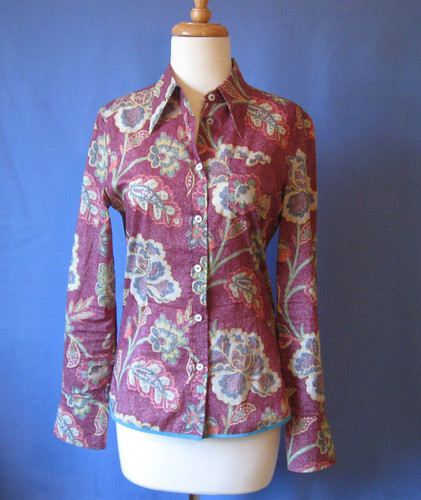
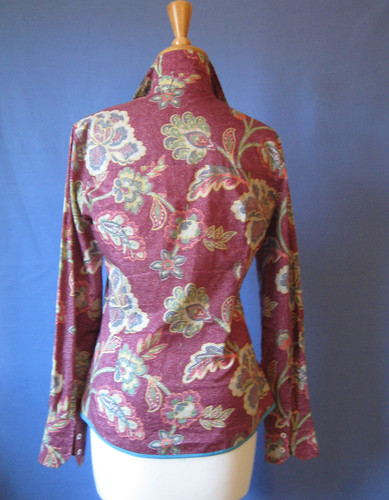
The owner loves the fit and style, and really wanted me to copy instead of using a new pattern. As it happens I was just reading this book, Patternmaking for a Perfect Fit: Using the Rub-Off Technique to Re-create and Redesign your Favorite Fasions by Steffani Lincecum.
I highly recommend it if you are interested in this technique. The photos are clear, and she shows you not only how to copy a garment, but how to take that copy and redesign it to make other styles. She copies a dress, skirt, blouse, and a handbag, using vintage items.
I have been using something very close to her technique but learned a lot from reading the book. This is nowhere near a tutorial but I can show you some of the steps involved in copying.
To get started, I pin the blouse together in order to divide it in half lengthwise and find the center back line which I will put on the fold.
Next I run a thread trace down the center back line, which is folded. Then I unpin the sides and then take some measurements to be sure the line is accurately in the center. See bright green thread line.
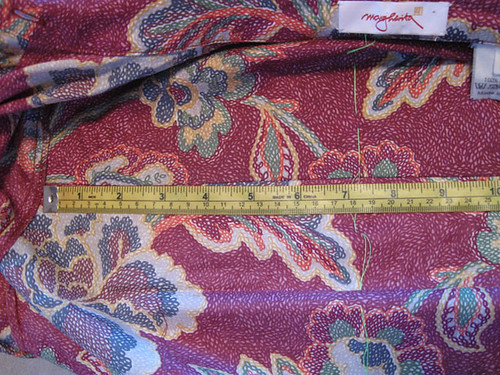
For the back yoke, I used a technique straight out of this book. Previously I would have placed the tracing paper on top of the garment and then traced, but here the tracing paper is underneath the blouse, the pins hold it down and poke holes in the paper which can then be joined in a connect-the-dots manner to draw the pattern piece.

Here is the finished back yoke piece, after I have connected the dots. Then I can lay it over the blouse to re-check the dimensions.
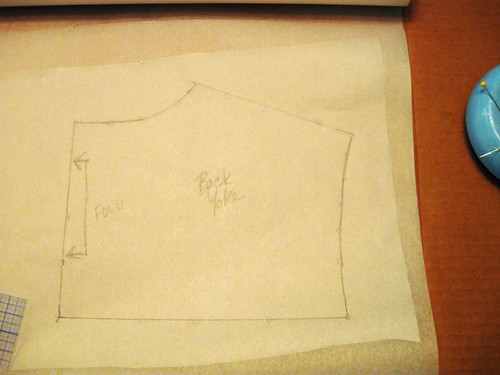
Onto the collar which is one of the easier pieces to copy, because you can lay it flat with no trouble. Following that logic, the sleeve is the real troublemaker in this process, but with some fussing it can be done.
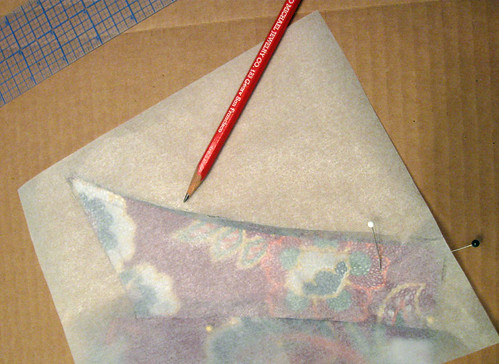
Non-sewing tidbit. As I was tracing I noticed I was using this red pencil, which must be at least 50 years old. It is from a long gone jewelry store in downtown San Francisco owned by some of my mother's Italian cousins. It was one of those upstairs stores - you had to know where it was, and had a claim to fame. Baseball great and SF bay area native Joe DiMaggio brought Marilyn Monroe there to pick out her engagement ring. Very thrilling for the family!
Back to sewing: here is the front of the blouse, which has long darts. With some fiddling and folding, it is possible to pinch the darts into the paper, you have to pivot the fabric a bit underneath in order to get the full width of the garment.
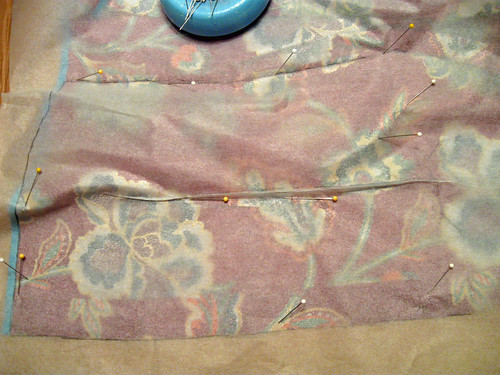
Here are some finished pattern pieces, with the seam allowances drawn on. Even though I am constantly adding and dividing fractions of 1/8" in my head, I cannot bring myself to use anything other than a 5/8" seam allowance. Oh, how that 1/2" would be so nice and even. But then I would probably sew at 5/8" and my garment would have mysteriously shrunken in the sewing. So better to stick with the 5/8".
If you have a garment that is just right, you love the fit and want to re-create it, give it a try. I suggest starting with a skirt or a simple blouse.
Next post - making a test blouse.
 Here is today's SunnyGal Garden photo which is Tanacetum parthenium, common name Feverfew. Another plant sale purchase and I think it is so cute! Things are looking good in the garden, the tomatoes are ripening and we are heading into the mid-summer time when there is not much garden work and mostly garden enjoyment. Happy Sewing
Here is today's SunnyGal Garden photo which is Tanacetum parthenium, common name Feverfew. Another plant sale purchase and I think it is so cute! Things are looking good in the garden, the tomatoes are ripening and we are heading into the mid-summer time when there is not much garden work and mostly garden enjoyment. Happy Sewing 
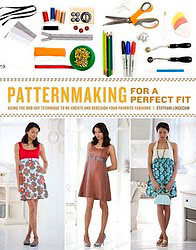
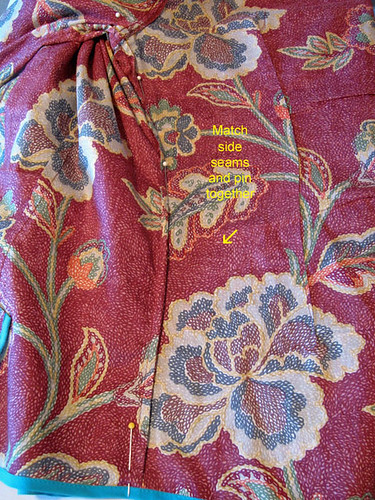

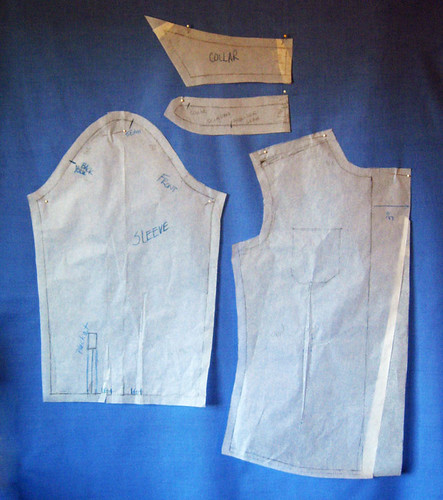










I have this book and it was a huge help a few months ago when I started to sew. Great for those attempting to try sewing with an existing sewing.
ReplyDeleteI've taken clases on this technique at G Street Fabrics but never actually tried it. However my favorite jeans are no longer available so I might try a merge of this technique and a Burda pattern one of these days.
ReplyDeleteGreat post! My husband is always after me to copy various pairs of his well-loved trousers, and this was really clear. Thanks!
ReplyDeleteI have used a "pins in tne seams and rubbing" technique to copy garments, but this method looks to be better for capturing accurate dart takeup. I like the piping at the hem. Great idea for someone that likes to wear overblouses or when I forget to add hem allownces to a Burda pattern.
ReplyDeleteIt is a wonderful thing to have a blouse pattern that fits perfectly!
ReplyDeleteThanks for your comment, although I don't even know what 40F really is! However I guess it is all relative. We have been to California during your summer, and I agreed with shams; I found it to be quite cold.
Oh, and an interesting weather paradox; California had nice mild winters like us, but cold summers; and Pennsylvania had bitterly cold winters, but very hot and humid summers. Much more extreme temperatures... I think it must be due to the high humidity they have, that really soaks the cold right through to your bones.
ReplyDelete